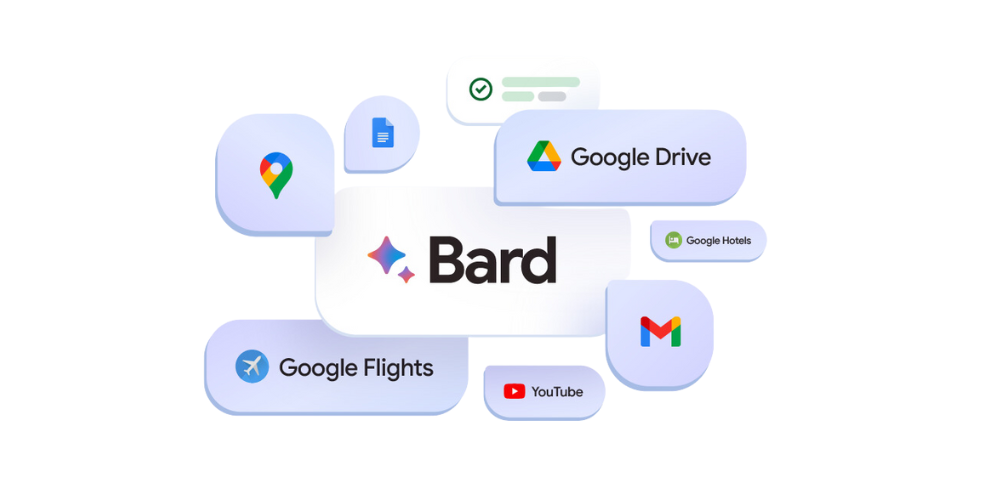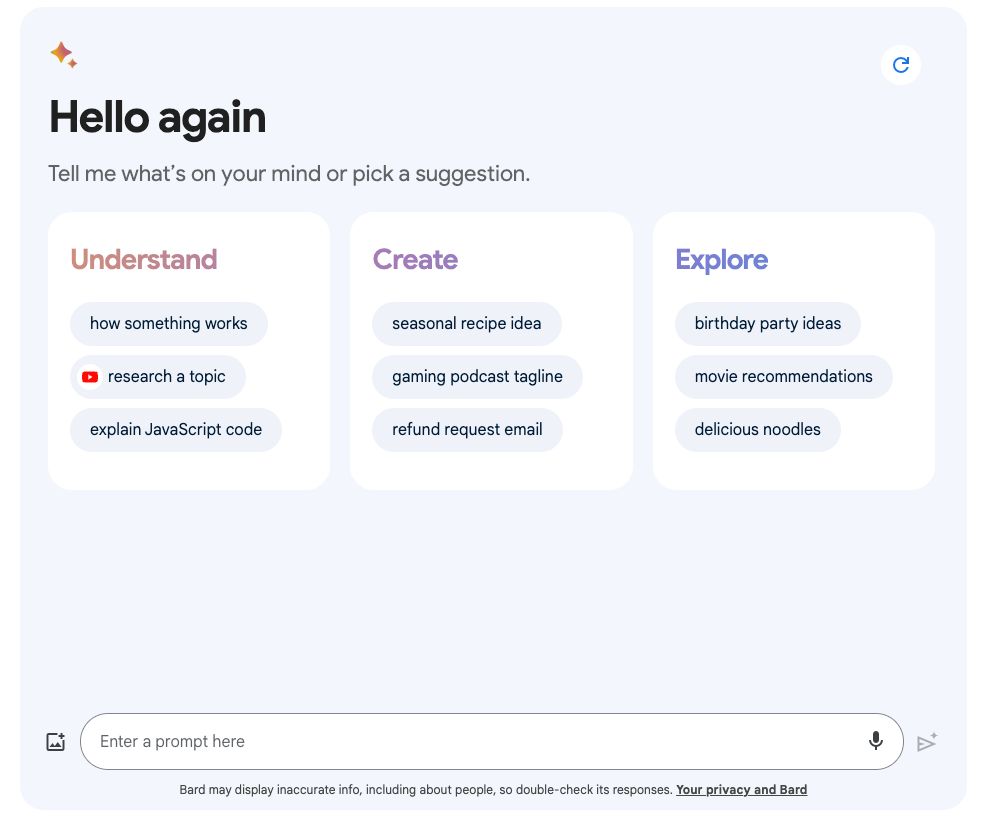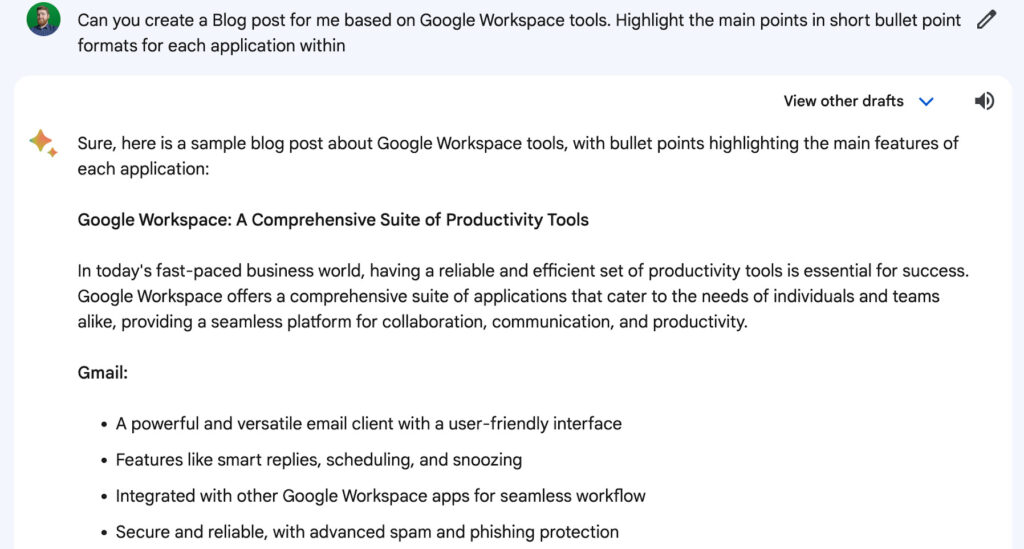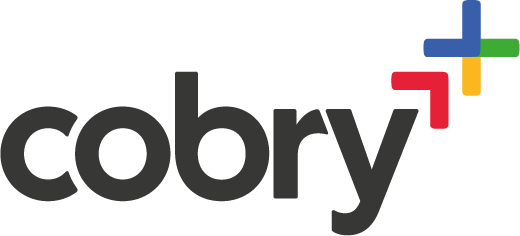
With the emergence of advanced AI technologies like chatGPT and Google Bard, writing effective AI prompts has become an essential skill.
Our comprehensive guide will empower you with the skills needed for successful AI content generation and show you example prompts for Bard. We will delve into how to use Google Bard, offering insightful tips and best practices for crafting effective Google Bard prompts. Here is what we’ll cover:
- What is Google Bard
- How does Google Bard work
- How to prompt Google Bard
- Six keys to writing better prompts
What is Google Bard?
Google Bard is a powerful AI (artificial intelligence) powered tool that can create new content, such as text, images, music, and code.
This tool can help you with all aspects of your work life. From brainstorming ideas to generating content to managing your calendar, Bard helps you get more done in less time.
Here are just a few of the ways that Bard can help you with:
Brainstorm ideas
Bard can help you come up with new ideas for products, services, marketing campaigns, and more. Simply tell Bard what you're working on and it will generate a list of ideas for you to consider.
Generate content
Bard can generate a variety of content types, including blog posts, articles, social media posts, email newsletters, and even sales presentations. By using the right prompts, Bard will generate a high-quality piece of content for you.
Manage your calendar
Bard can help you schedule appointments, meetings, and other events. It can also remind you of upcoming deadlines and events.
Research topics
Bard can help you research topics for your work projects, as well as provide you with summaries of complex topics and articles.
Translate languages
Bard can translate text from one language to another in real time. This can be helpful for communicating with international colleagues or clients.

How does Google Bard work?
So, how does Bard actually work? Google Bard is powered by Generative AI. This is a type of artificial intelligence that can generate new content. It does this by learning the patterns and structure of data and then uses that knowledge to create new outputs.
Generative AI models are trained on large datasets of existing content, and they learn to identify patterns and relationships in the data. Once trained, generative AI models can generate new content that is similar to the data they were trained on, but not identical.
Bard itself pull data from a Large Language model (LLM). This is a massive data set, where all the information for prompts is stored and pulled from.
Therefore, it allows you to do complete research, have a conversation, get assistance on a wide variety of tasks and generate content from a range of media and much more.
How to use Google Bard
Getting started with Bard is quite easy. Just like all other Google tools, Bard is intuitive and easy to use.
- To get started, go to bard.google.com and log in with your Google account.
- Unleash your creativity and type your prompt in the message box on the Bard home page.
- Bard will then generate a response for you. Based on the output, you can:
- Like or dislike the response
- Ask Bard to modify its response
- Share your response, export it right away in a Google Doc or create a draft in Gmail
- Fact-check Bard’s response
- Review alternatives
6 keys to writing better Google Bard prompts (plus examples)
To get the most out of Google Bard, it’s important to understand how to craft successful prompts to unlock the full potential of this AI tool. Therefore, we put together a list of six key components that you need to use, in order to get effective Google Bard responses.
Mandatory
1. Task
The task is the most important component of a Bard prompt, as it tells Bard what you want it to do. Be as specific as possible when defining the task, and use action verbs like "generate", "write", "translate", or "summarise".
Example: Instead of saying "Give an example of a marketing campaign", you could say "Generate a summary of a successful marketing campaign in 200 words".
2. Context
The context provides Bard with additional information that can help it complete the task more accurately. This could include information about the topic, the audience, or the style of the desired output.
Example: If you are asking Bard to generate a summary of an article, you could provide it with the link to the article as well as a brief description of the audience and the desired style.
Important
3. Example
Providing Bard with an example helps it understand the tone, style, and format of the desired output. This could be a previous example of Bard's work, or it could be a piece of text from another source.
Example: If you are asking Bard to write a newsletter in an informal but fun style, you could provide it with a link to a similar article as an example.
4. Persona
The persona is the voice or character of the desired output. This could be your own voice, your organisation's, or it could be the voice of a different character, such as a news reporter or a scientist. Providing Bard with a persona can help it to generate output that is consistent with that voice.
Example: If you are asking Bard to write a news article, you could specify that the persona should be a neutral and objective reporter.
Preferable
5. Format
You can specify the desired format of the Google Bard output. This could be a specific type of creative text format, such as a poem, a code snippet, or a script, or it could be a more general format, such as an essay or a list. Setting the format in your prompt helps Bard generate output that is structured in the desired way.
Example: If you are asking Bard to generate a list of the top 10 programming languages, you could specify that the output format should be a numbered list.
6. Tone
Setting a tone of voice in your prompt will help you generate output that is consistent with your brand and message. This could be a formal or informal, or a specific tone of voice, such as humorous, informative, or persuasive.
Example: If you are asking Bard to write an email to an important client, you could specify that the tone should be informal and engaging.
By utilising each of these components, you will include enough relevant information for Bard to generate effective and relevant prompts. You may not always need all components to achieve a good output, but they will help you get the most out of the AI tool.

We encourage you to experiment with different prompts and use cases, as this will not only improve your skills but also contribute to the evolving intelligence of Google Bard. Whether you're using Bard for writing emails, analysing data or simply to find some inspiration, the potential of this AI tool is immense.
Remember, the effectiveness of Google Bard largely depends on the quality of the prompts you provide. The clearer and more focused your prompts are, the more precise and useful Bard's responses will be. Use the six key components outlined above and your prompts will be clear and directive so you can get the most out of Bard.
With tools like Google Bard at your fingertips, you're well-equipped to make the most of this exciting technological era.
Leverage the power of AI with Cobry's tailored training
At Cobry, we help our customers stay competitive in today's digital age and leverage the power of AI. That’s why we developed bespoke Bard and Duet AI training for for businesses, curated to fit your company’s needs and equip your teams with the knowledge and best practices to make the most of Bard and Duet AI.
Our expert trainers provide you and your teams with hands-on experience and practical tips to help you unlock the full potential of AI. Get in touch and find out more.







